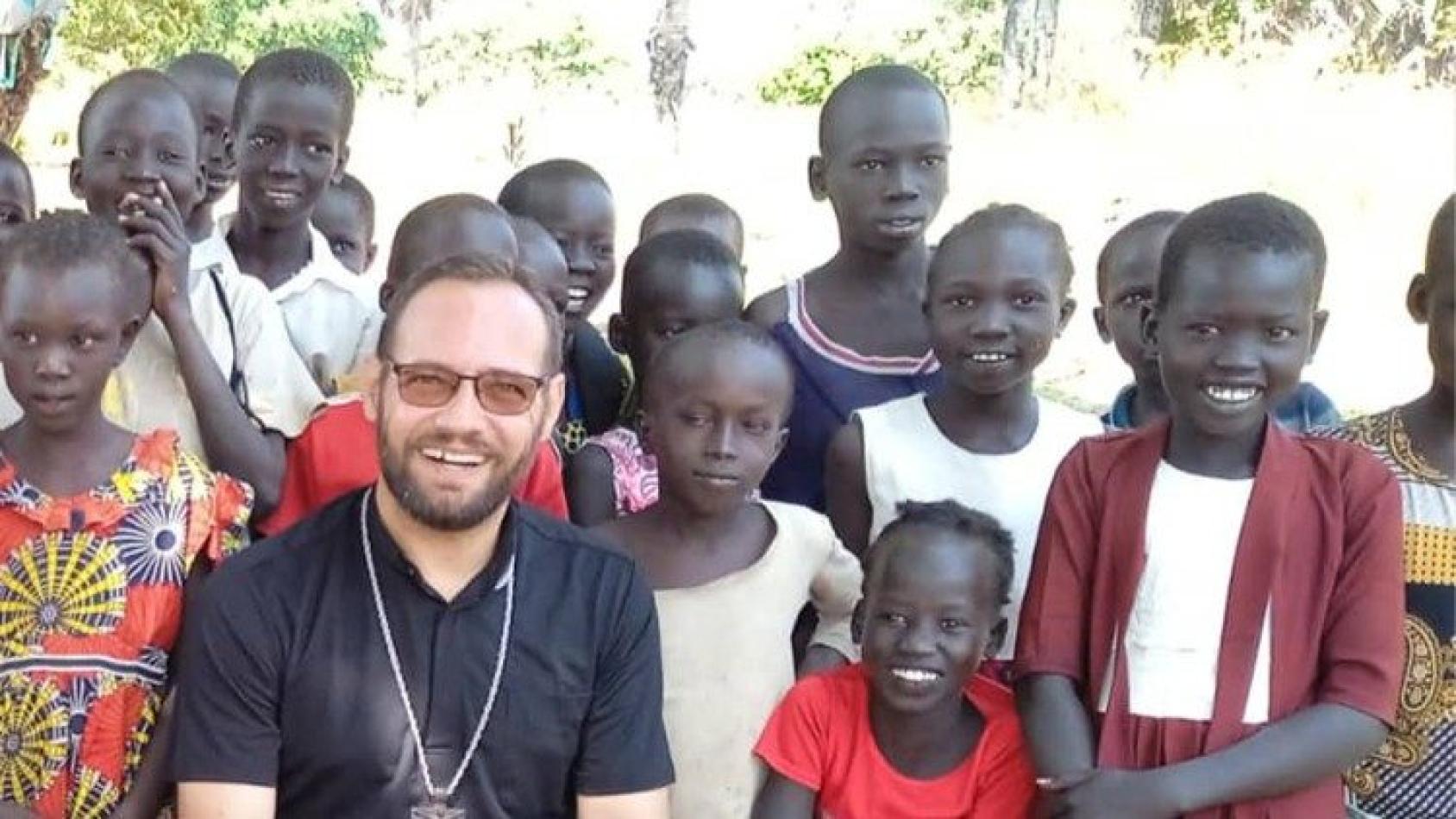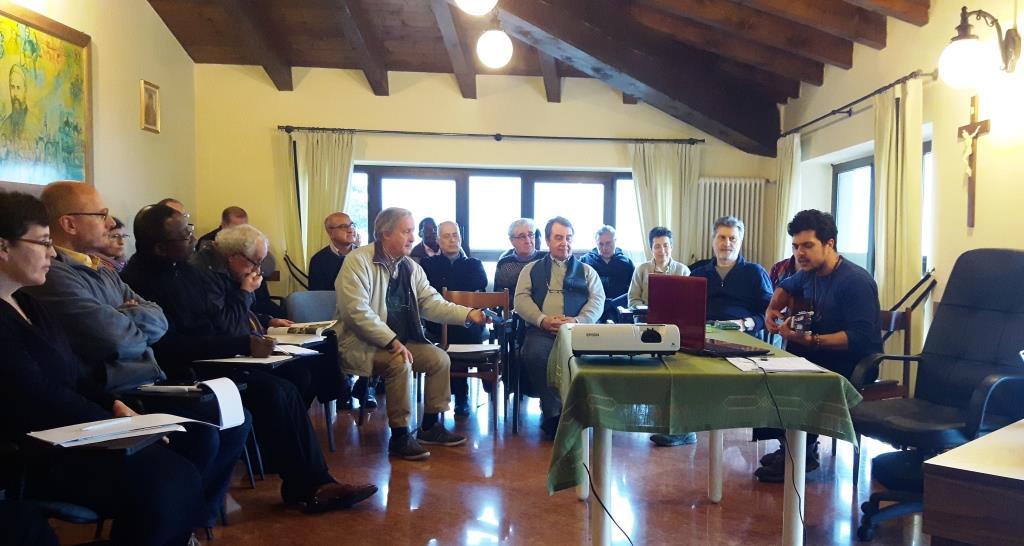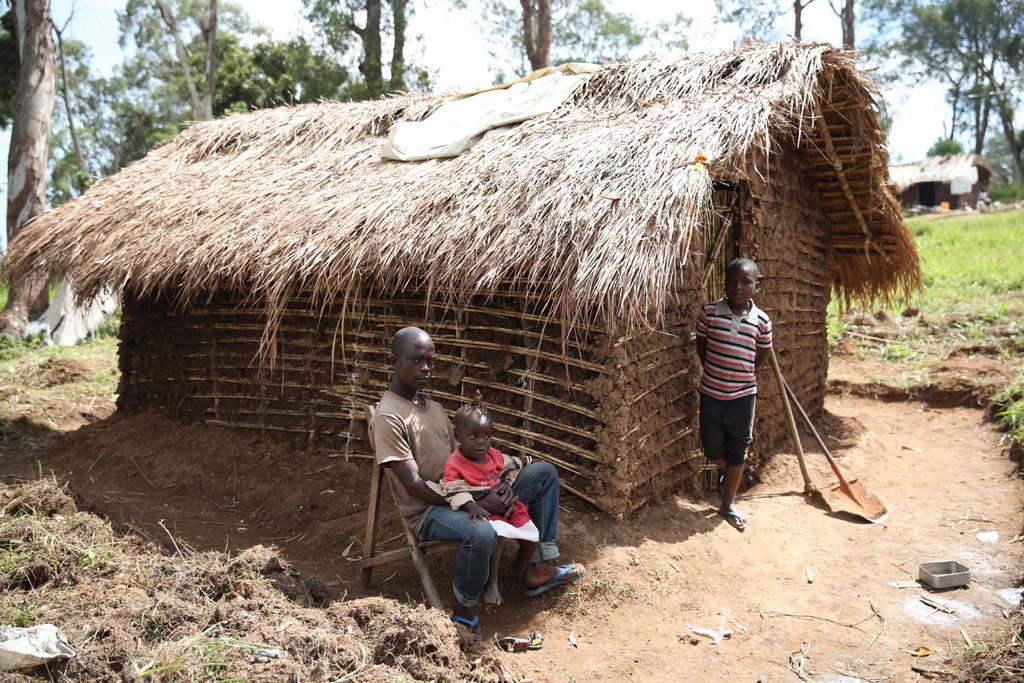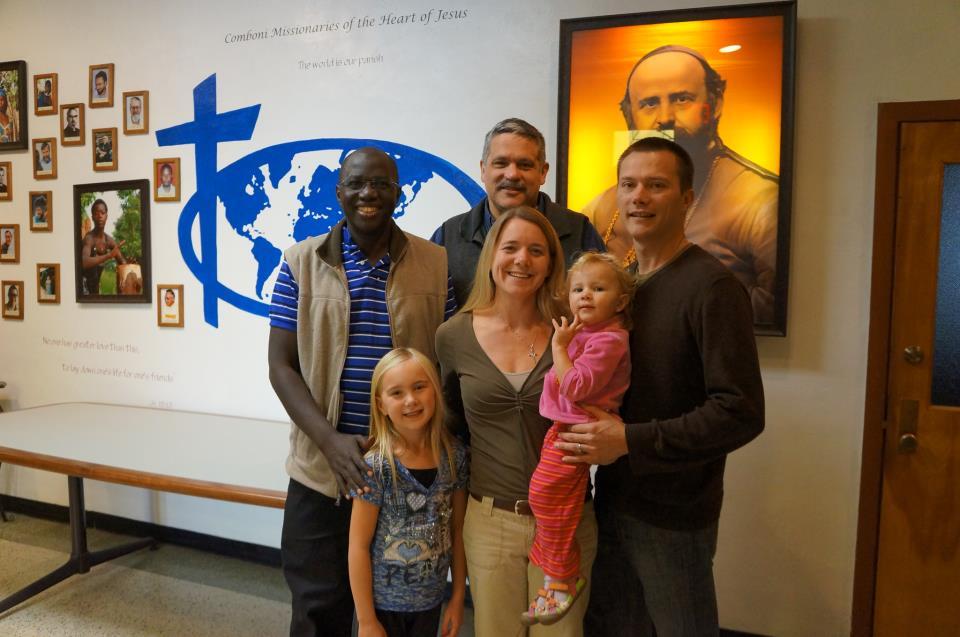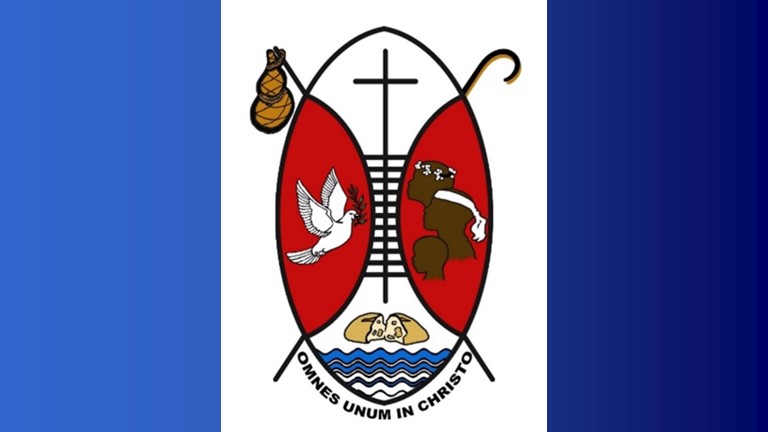Daniel Comboni
Missionnaires Comboniens
Zone institutionnelle
D’autres liens
Newsletter
Saturday, August 3, 2024
The meeting of the Sudan Catholic Bishops’ Conference in Wau in November 2023 was for the opening of the Eucharistic Congress and the Golden Jubilee of the Hierarchy. The event began on November 26, 2023, and was part of a larger celebration that will conclude in Juba on November 24, 2024. [In the picture: Christian Carlassare, new bishop of Bentiu]
During that meeting, His Excellency Most Rev, Hubertus Matheus Maria Van Megen communicated officially to the Bishops the will of His Holiness Pope Francis to recommend five areas to become dioceses. Four in South Sudan and one in the Sudan. These five areas include Bentiu/Bi̱ɛtim in the Diocese of Malakal, Aweil in the Diocese of Wau, Maridi in the Diocese of Tombura/Yiambo, Terekeka in the Archdiocese of Juba, and Nuba Mountain in the Diocese of El Obeid.
Profile of the Diocese of Bentiu/Biɛtim
1. Conceptual Analysis of Terminologies
As we prepare ourselves for the celebration of the Parish of Our Lady Rosary, the Celebration Fruit of Faith for the people of Bentiu/Bi̱ɛtim and the Church at large. However, certain word issues require clarification as we go along. The first one is the name “Bentiu” which originated from the term ‘Bi̱ɛtim. In the Nuär language, the term Bi̱ɛtim is translated into English as “nostalgia.” It is said that the place Bi̱ɛtim was located near the place called “Thɔrkɔam”, 10 km south of the town where the Headquarters of the New Diocese is located. It was believed that the elders of Nuär held an important conference in the 18th century when one of the elders called Latjɔ̱r Duäth also known as (Latjor Duäth and Diŋ-yian referred to the colour of his ox) decided to take some people to the Eastern side of the Nile which led to the discovery of Nasir. He was advised not to leave, but he insisted. Then the elders said to him, “Bi̱ɛtim- meaning you will have a nostalgia. Therefore, the word Bi̱ɛtim was later referred to the specific place of departure of Latjor Diŋ-yian called “Thɔrkɔam” as indicated above. Furthermore, nostalgia means a wistful or excessively sentimental yearning for return. Unfortunately, due to wrong pronunciation, Bi̱ɛtim became Bentiu which has no meaning in the Nuär language. Detailed information about the departure of Latjɔ̱r Duäth or Latjor Diŋ-yian to the Eastern Nile is discussed thoroughly in my book entitled The Compendium of Nuär Origin, Culture and Moral Evaluation, published by Africa World Books Pty, 2023 in Austria.
In addition, another word was mispronounced Rubkona by Arabs means Rubkɔni̱ in the Nuär language. The term Rubkɔni̱ is a combination of two words. First, rub means forest and Kɔni or kɔt means tamarind trees. Therefore when they are joined in one word “Rubkɔni̱” simply means forest of tamarind trees. Unfortunately, one would wonder why the Arabs introduced the word Rubkona/pronounced right Rubkɔni̱ to that village originally called ‘Yɔanyaŋ’ when there was no forest of tamarind trees. Furthermore, the word Yɔanyaŋ is also a combination of two combined words. First, Yɔa is a skirt formerly worn by Nuär women made out of cotton and nyaŋ means crocodile. Therefore, Yɔanyaŋ refers to the skirt of a crocodile. Yɔa refers to a certain type of plant present in the river of Yɔanyaŋ.
Another word that requires clarification is the word “Unity State” formerly called Bentiu/Biɛtim. It is one of the 10 States in South Sudan. However, the name “Unity State” was introduced by the former President of Sudan Jafar (Jaafar) Mohammed Nimeiri who ruled Sudan from 1969-1985. He was motivated by the discovery of oil in the area by international companies in the 1970s as a result of exploration. Consequently, he changed the name of Bentiu/Biɛtim to Unity State to become inclusive. Thus, according to him, the Unity State should accommodate everyone including the northerners. Consequently, this justified the exploitation of oil in Unity State (Biɛtim) Southern Sudan to the North of Sudan.
Geographically, Unity State (Bentiu/Biɛtim) is located in Rubkɔni̱ (yɔanyaŋ) County in the Great Upper Nile of South Sudan, near the international border with the Republic of Sudan. In other words, Unity State is in the Greater Upper Nile Region. It is inhabited predominately by two ethnic groups: the majority are Nuär (Nuer) and the Dinka (Jieng). According to previous administrative divisions, the Capital of Unity is Bentiu/Biɛtim. Before an administrative reorganization in 1994, Unity was part of a much larger province of Upper Nile, and the state was sometimes called Western Upper Nile as we have mentioned earlier.
Unity State lies approximately 654 kilometres (406 miles) by road, northwest of Juba, the capital and largest city in the country. By flight, it takes 1 hour and a half from Juba. Geographically Unity State (Bentiu/Biɛtim) covers an area of 38,837 sq km (14,995 sq mi). The latest available data indicates that the population of Unity State is 1,018,434 million. This information comes from the UNICEF document, the most recent source available. Furthermore, Unity State (Bentiu/Biɛtim sits on the Southern bank of the Bahr el Ghazal River that separates it from the town Rubkoni̱ (yɔanyaŋ) which sits on the river’s northern bank. Consequently, Bentiu /Biɛtim) town and Rubkoni̱ (yɔaynyaŋ) are joined by the El Salaam Bridge.
2. Seven Counties and One Administrative Area
Unity State (Bentiu/Bɛi̱tim consists of seven counties and one administrative area. The seven counties and the administrative area are as follows if you begin counting them from the northern regions because it is divided into northern and Southern areas. Ruweng Administrative Area, Mayɔm County, Rubkɔni̱ County, Guit County, Koch County, Leer County, Mayiandit County, and Panyijar County. Ruweng Administrative area is occupied by Dinka (Jieng) in the north. Rubkɔni̱ /Yɔaynyaŋ County is inhabited by Leek Nuär the sons of Kɛ̈ɛ̈r Gɛkä, Mayom County is inhabited by Bul, the sons of Bol Gɛkä, Ji̱käny Nuär, the sons of Ki̱i̱r Kakër, occupies Guit County. According to the legend, their great-father was cut out of the gourd by Gɛ̈ɛ̈k.
Jagɛi Nuär inhabits Koch County. It is considered to be the Centre of the House for two reasons. First, it is a place of mythological origin of Nuär. According to the myth, the Nuär claim that their Great grandparents were created under a tree called “Ŋɔ̱ɔ̱b”, in the Nuär language in a village called “Li̱ch” in the middle of Koch County. Sometimes, the Nuär refer to it as Under the Tree/Thar Jiath or the Under Tree of Li̱ch/Thar Jiath Li̱ch. Second, Koch County is located in the middle of six major clans, three in the north and three in the Southern area. Dɔk Nuär inhabits Leer County, Mayiandit County is inhabited by Ɣa̱a̱k Nuär and finally, Nyuɔŋ Nuär occupies Panyijar County. These major clans have their subclans or segments within each clan. More details about these seven major clans are treated in my book entitled The Compendium of Nuär Origin, Culture and Moral Evaluation, published in Austria by Africa World Books Pty, 2023.
However, the name county was introduced recently by the government. Formerly the name county did not exist. Previously, we referred to those places as seven major clans. Mayɔn County was called Bul Nuär referring to all the subclans of Bul, Leek County was formerly referred to as Leek Nuär including the subclans, Guit County was referred to Ji̱käny Nuär including the subclans, Koch County was simply referred to Jagɛi Nuär including the subclans, Leer County (Lɛɛr) was to refer to Dɔk Nuär including the subclans, Mayiandid County was referred to Haak/Ɣa̱a̱k Nuär including the subclans, Panyi̱ja̱r County was formerly referred to Nyuɔŋ Nuär including the subclans and Ruweng Administrative Area was referred to Ruweng. Thus, each segment within these major clans occupied territorial integrity including the borders of each major clans.
3. Declaration of Diocese of Bentiu/Bi̱ɛtim
The meeting of the Sudan Catholic Bishops’ Conference in Wau in November 2023 was for the opening of the Eucharistic Congress and the Golden Jubilee of the Hierarchy. The event began on November 26, 2023, and was part of a larger celebration that will conclude in Juba on November 24, 2024. During that meeting, His Excellency Most Rev, Hubertus Matheus Maria Van Megen communicated officially to the Bishops the will of His Holiness Pope Francis to recommend five areas to become dioceses. Four in South Sudan and one in the Sudan. These five areas include Bentiu/Bi̱ɛtim in the Diocese of Malakal, Aweil in the Diocese of Wau, Maridi in the Diocese of Tombura/Yiambo, Terekeka in the Archdiocese of Juba, and Nuba Mountain in the Diocese of El Obeid.
However, His Excellency Most Rev, Hubertus Matheus Maria Van Megen reminded the Bishop, that the declaration of Bentiu/Bi̱ɛtim as a Diocese is reserved for His Holiness Pope Francis to announce it. After the meeting of the Sudan Catholic Bishops’ Conference in Wau, the Bishops communicated to the faithful the will of His Holiness Pope Francis to recommend those areas to become dioceses. They reaffirmed that Bentiu/Bi̱ɛtim is in the hand of His Holiness Pope Francis and that he can announce it at any time. This news was received with enthusiasm from the faithful of Bentiu/Bi̱ɛtim both from within and from outside the country. They became hopeful but preoccupied themselves with two questions. First, when is it going to be announced and second, who is going to become the bishop of the Diocese? However, they said, “Let it become a Diocese, whoever will be appointed as the new Bishop of Bentiu/Bi̱ɛtim by His Holiness Pope Francis will be our shepherd.”
On Wednesday, July 3, 2024, the establishment of a new Diocese of Bentiu/Bi̱ɛtim with territory dismembered from the Diocese of Malakal, making it a suffragan of the Metropolitan Archdiocese of Juba. It was publicly declared by the Holy See Press Office on Wednesday announced His Holiness Pope Francis appointed Bishop Christian Carlassare currently serving as the Local Ordinary of the Diocese of Rumbek as its Bishop. The news of the establishment of the new Diocese of Bentiu/Bi̱ɛtim was publicly declared by the Holy See Press Office on Wednesday, July 3, 2024, at 12: 00 noon. From November 26, 2023-Wednesday, July 3, 2024, Bentiu/Bi̱ɛtim was announced as a new Diocese after 8 months and some days. It was publicly declared as the Diocese of Bentiu/Bi̱ɛtim and not the Catholic Diocese of Bentiu/Bi̱ɛtim which should be respected as the official name of it.
It was also announced at the same time on July 3, 2024, at 12:05 p.m. Local Time by H.L. Bp. Stephen Nyodhdo at St. Martin De-Pores in the presence of the seven priests (Fr. William Bol Gai, the Episcopal Vicar for the Pastoral Region, Fr. Samuel Akoch, the Parish of St. John Evangelist–Jamjang, Fr. Bullus Reath Padiet, the Parish Priest of St. Mary Help of Christian–Abiemnhom, Fr. Angelo Majwok, the Parish Priest of St. Bakhita Parish–Mayom, Fr. Arthur, Capuchin brother, Our Lady of Holy Rosary Parish Rubkɔni̱–Yɔanyaŋ, Fr. Willam Bawar Kharay, the Parish Priest of St. Martin De-Porres–Bentiu/Biɛtim, Fr. Bullus Maker Chan, the Parish Priest of St. Michael–Parieng) and among the government, representatives was the Governor of Unity State, H.E Justice Riek Biem Top and the Deputy Governor of Unity State, Hon. Tor Tunguar Kueiguong and other government officials and all the parishioners of St. Martin De-Porres and representatives from the seven Parishes of the newly erected Diocese.
The newly erected Diocese measures 37,836 square kilometers. It has a population of 1,131,885 of which 621,643 are catholic faithful, representing 54.92% of the total population of the territory of the diocese. The newly established Diocese starts with seven parishes (St. Martin De-Pores Parish–Bentiu, Our Lady of Holy Rosary–Rubkona/Yoanyang, St. Bakhita Parish–Mayom, St. Mary Help of Christian Parish–Abiemnhom. St. Michael Parish–Parieng, St. John the Evanngelist–Jamjang. St. Joseph the Worker Parish–Leer), seven Diocesan priests, four Religious priests, 10 major seminarians, and two male religious institutes. Furthermore, the newly established Diocese borders four dioceses first, her sister Catholic Diocese of Malakal in the east, the Catholic Diocese of Rumbek in the South, the Catholic Diocese of Wau in the West, and the Diocese of El Obeid in the North.
Consequently, the declaration was received with impromptus and spontaneously celebrated by the faithful of the new diocese. They felt that their long-awaited desire for their place was now fulfilled in a way beyond their imagination because they longed for it for many years. Their faith in Christ has spoken enough and has reached the ears of His Holiness Pope Francis. Furthermore, the people of the new Diocese are blessed in 2024, with three major things, first, the erection of their diocese, second, the appointment of the new Bishop to the Diocese, Bishop Christian Carlassare and the appointment of the new governor General Justice Rie̱k Bie̱m on May 22, 2024, by His Excellency President Salva Kiir Mayardid. These are considered major forgetful events in the lives of the faithful in the new Diocese of Bentiu/Biɛtim. However, we can ask ourselves can it become when it is in bad shape? Therefore, below are some dilemmatic questions concerning the status quo of the new Diocese.
4. Dilemmatic Questions Concerning Challenges
First, the situation of the new Diocese of Bentiu/Biɛtim has deteriorated since the beginning of the civil war 2013. This deterioration ranks from various levels of life.
1. A dilemmatic question concerning infrastructures in the new Diocese: Can a diocese be announced without a Cathedral? Can it be erected without the residence of the new Bishop? Is it possible to establish a diocese without institutions such as catholic schools, colleges, universities, and proper churches built with their chapels and Palica pastoral centre for training of pastoral agents? Can it be established without dispensaries and hospitals (Healthcare system)? Can the Diocese be managed effectively when it does not have enough lands both at the levels of parishes and centres? Can the Diocese be erected when there is no accessibility beyond Bentiu/Biɛtim town due to the lack of roads connecting all the counties with the State?
2. A dilemmatic Question concerning finances in the new Diocese: Can the diocese be erected without final assistance from within to support its pastoral activities? Can it be established without having income-generating projects in all the parishes including the chapels? Can the Diocese be established without support from donors and people of goodwill including Caritas? Can the Diocese be run without money to support the pastoral agents (for example, salaries) and the needy? Can the Diocese be managed effectively when there is an economic hardship at the household level that challenges the life of the faithful? Can the Diocese be established without the cars of Bishops and priests to facilitate their pastoral work?
3. A dilemmatic Question concerning insecurity in the new Diocese: Can the diocese be established when there is no security? Can it be run effectively when the majority of lay faithful are confined to POC due to fear of insecurity? Can the Diocese be run effectively when there is a rivalry of army forces? Can the Diocese be run effectively when the security situation with neighbouring Dioceses or States is not good? Can the diocese be managed well when floods submerge churches and chapels with the consequence of many displaced persons from their original homes? Can the diocese be established when there is no justice, peace, and love among the faithful? Can the Diocese be established when there is rivalry between army forces which sometimes leads to looting of the property of innocent people and sometimes rape? Can the Diocese be erected when there is raiding of cows among the Nuär clans and their neighbouring brothers like Dinka (Jieng)?
4. A dilemmatic Question concerning moral issues such as polygamy and promiscuity: Can the Diocese be erected when there are some Christians who engage in polygamy and promiscuity? Can it be established when some men and women engage in promiscuity and divorce? Can the diocese be erected when some young men and girls engage in fornication (promiscuity) that sometimes leads to pregnancy? Can it be a good Diocese without meeting the moral virtues of the Gospel and the life of Jesus Christ? Can the Diocese be established without people ready for forgiveness, reconciliation, Unity, and compassion? Can it be erected without faith in Christ? Some of these dilemmatic questions reflect the challenges of the new Diocese but others are genuine and relevant. Can various committees operate in the diocese without guidelines as required by Canon Law? However, below are other hypothetical questions that are very close to the reasons why a new Diocese of Bentiu/Biɛtim was erected by His Holiness Pope Francis on Wednesday, July 3, 2024.
5. Hypothetical Questions Concerning the Erection of the Diocese
Earlier we mentioned the major clans comprised of Bul, Le̱e̱k, Ji̱käny, Jagɛi, Dɔk, Nyuɔŋ, and Ɣa̱a̱k. The estimated number was 120,000 internationally displaced people (IDP). The essential question one should ask is: why did God bring all these clans to Yɔanyaŋ the first mission station in Bentiu/Bi̱ɛtim? Why did he not choose another place for them to stay? After He has witnessed their faith for so many years in UNMISS, did God reward them with a Diocese?
According to God, why did Bentiu/Yɔanyaŋ, the first mission station in Bentiu/Bi̱ɛtim become a point of departure for becoming a diocese? Could it be considered as a reward because of the faith of the faithful of Bentiu professed all this time amidst the difficulties? Could the pastoral visit on October 8, 2018, to the Bentiu region by the representative of Pope Francis, Mgr. Mark Kadima now a Bishop contribute to Bentiu/Bi̱ɛtim becoming a diocese?
Furthermore, could the pastoral visit on March 4, 2021, by Mgr. Paul Ionut to the same place also contributes to Bentiu/Bi̱ɛtim becoming a diocese. Could, the apostolic visit of His Eminence Cardinal Pietro Parolin, the Secretary of the State to Bentiu/Bi̱ɛtim on July 5, 2022, contribute to becoming a diocese?
Could the arrangements for receptions and celebrations of Eucharist prepared by the Priests (Rev. Fr. Joseph Makuei, Rev. Fr. Bullus Dirpiny and then Rev. Fr. Stephen Ocir) and other pastoral agents for those high-profile Church personnel contribute to Bentiu/Bi̱ɛtim becoming a diocese? Was it a plan of God to allow those high-profile Church personnel to see 120,000 internationally displaced people (IDP) in one place and more than 50,000 outside the POC, that a decision could be taken by the Holy See to erect Bentiu/Bi̱ɛtim to the level of the diocese? Could the erection of Bentiu/Bi̱ɛtim to the level of the diocese contribute to self-reliance? Could God bring good out of evil as in the case of (IDP)? These are questions for personal reflection beyond self-reliance. These questions involve the plan of God for the salvation of the people of Bentiu/Bi̱ɛtim as a whole.
6. Curriculum Vitae (CV) of H. L. Bishop Christian Carlassare
The name of the newly appointed H. L. Bishop of the Diocese of Bentiu/Bi̱tim is Christian Carlassare. His father is Pier Antonio Carlassare and his mother is Marcellina Leder. He was born in Schio (VI) on October 1, 1977. He is an Italian by birth and he has been granted South Sudanese nationality as well. He speaks the following languages: Italian, English, Nuär (Nuer), and Dinka (Jieŋ), and can listen to French and Spanish.
Educational background: from 1983-1988, “Giovanni Pascoli” Primary School in Piovene Rocchette (VI). From 1988-1991, “Antonio Fogazzaro” Junior Secondary School in Piovene Rocchette (VI). From 1991-1996, “Aulo Ceccato” Senior Secondary School in Thiene (VI) and S.L.C.
Seminary and Formation: from 1994-1996, Orientation Course at the Seminary of the Comboni Missionaries in Thiene (VI). From 1996-1998, Postulancy and philosophical studies in Florence (FI) at the Theological Faculty of Central Italy.
From 1998-2000, Noviciate in Venegono Superiore (VA). From 2000-2003, Theological studies at the Pontifical Gregorian University in Rome, a Bachelor’s Degree in Sacred Theology. From 2003-2004, he obtained a Bachelor’s Degree in Sacred Missiology at the Pontifical Urbaniana University in Rome. He was in London (UK) for an English Course from 2004-2005.
Sacraments, Religious Profession and Holy Orders: On November 11, 1977, Baptism at the Parish of St. Christopher in Cogollo del Cengio (VI) by Rev. Lorenzo Ronzani. On May 18, 1986, First Holy Communion at the Parish of St. Stephen in Piovene Rocchette (VI). On March 8, 1990, Confirmation at the Parish of St. Stephen by Rt. Rev. Antonio Mattiazzo, Bishop of Padova. On June 10, 2000, the first religious profession in Venegono Sup (VA) was received by Fr. Manuel Augusto Lopes Ferreira, mccj General Superior. On December 19, 2003, the solemn religious profession in Rome (Italy) was received by Fr. Teresino Serra, mccj General Superior.
Ordination to the Holy Orders: On January 10, 2004, Diaconal Ordination at the Parish of St. Gregory Barbarigo in Rome by Bishop Romeo Panciroli, mccj. On September 4, 2004, Priestly Ordination at the Parish of St. Maria in Organo (Verona) by Bishop Flavio Robert Carraro, ofm cap, bishop of Verona. Appointments: On June 1, 2020, he was appointed Vicar General of the Diocese of Malakal. On March 8, 2021, he was appointed Bishop of the Diocese of Rumbek.
On March 25, Episcopal consecration at Holy Family Cathedral (Rumbek) by H. E. Card. Gabriel Zubeir Wako. H.E. Card. Stephen Ameyu Martin Mulla, and H. L. Bishop Mathew Remijo Adam acted as co-consecrators. On July 3, he was appointed the first Bishop of the newly erected Diocese of Bentiu/Bi̱tim (and Apostolic Administrator of Rumbek till a new Bishop is appointed). On August 11, 2024, the canonical profession of the Diocese of Bentiu/Bi̱tim.
Ministry and Missionary Activity: from 2005-2006, arrived in South Sudan and posted in Nyal Unity State to learn the Nuär language. From 2006-2007, Assistant Parish Priest in Holy Trinity Parish (Old Fangak-Jonglei State). From 2007-2016, Acting Parish Priest of Holy Trinity Parish (Old Fangak). From 2017-2020, Vocational promoter and director of the Orientation Course (pre-postulancy) in Moroyok (Juba) for the Comboni Missionaries. From 2011-2019, Member of the Secretariat of Vocational and Basic Formation. From 2012-2019, Provincial Council. From 2014-2016, Secretary of the Provincial Council. From 2017-2019, Vice-Provincial. From 2020-2021, Vicar General of the Diocese of Malakal. From 2021-2024, Bishop of Diocese of Rumbek.
6. The Coat/Ko̱o̱t of Arms of H. L. Bishop Christian Carlassare
The coat of arms takes the shape of an African shield. Instead of the two traditional spears, the pastoral staff and the walking stick of the pilgrim are crossed behind the coat. The travelling stick has a gourd tied on it which is used to carry milk for the journey.
The main field of the shield is white. This colour symbolizes openness, availability and holiness. It is in the form of a stripe starting from the bottom and rising upwards, indicating the path of life which has to be taken up with courage. The two side shapes are red and symbolize the land of Africa that demands Christian witness and self-giving to promote life.
The path of Christian life starts with the water of baptism which indicates our conversion and profession of faith. This faith is nourished with bread: bread to eat and the Eucharistic bread which is Jesus Christ who comes to us and accompanies us along the way. The Eucharistic bread is bread broken and given to us, as Jesus gave us his life, and calls us to be bread broken and given to all our brothers and sisters. The broken bread also represents our mission. And, as St Daniel Comboni used to say, the work of God, namely the mission of evangelization, starts at the foot of the cross. The cross of suffering can be an obstacle to continue on our faith journey but may also become a ladder to climb further.
The three figures on the right side represent three African people: a woman, a man and a child. The man wears a white headband and the woman white pearls to signify the dignity and liberation of the African people, and the commitment of each Christian to bring that liberation to others. The child reminds us of our vocation to help others grow in Christ. They also represent the Holy Family: Jesus, Joseph and Mary. But they may embody every family which is a domestic Church and the foundation of any peaceful society. They also help us recall the African saints and martyrs, such as St Josephine Bakhita, or lay pastoral agents such as the catechists, or Christians who committed themselves to build up the Christian community and contributed to their suffering at the salvation of other people.
On the left side, there is the biblical white dove carrying an olive branch, a symbol of peace and reconciliation. This message tells the people of South Sudan that God wishes to give us his peace and urges all to leave behind past divisions and violence. He invites us to give peace a chance. Any kind of discrimination or marginalization is a deliberate denial of the unity which we all have in Christ.
Therefore, the motto OMNES UNUM IN CHRISTO is taken from St Paul to the Galatians 3:28, “There is neither Jew nor Greek, slave nor free, male nor female, for you are all one in Christ Jesus”.
Conclusion
Chapter one dealt with the entry of Christianity to the Western Upper Nile, conceptual analysis of terminologies, seven counties and one Administrative Area, and the economic life of the people. It also explained broadly the phases of evangelization in Western Upper Nile including the brutal dramatic confrontation between Western Nuär and British Administrators, the appointment of paramount chiefs among the Nuär, the hierarchy of chiefs and their functions and the policy of geographical divisions of territories
Furthermore, the chapter discussed the Catholic mission in western Nuär, the role of the Indigenous Catholic priests, the explosion of faith among the Nuär in the Archdiocese Khartoum, the parishes for education and catechetical instruction including Brother Michael Sergi’s Club, and his method of evangelization, the five senses for communication, the Sacred Scripture on the origin of languages, the characteristics of each language.
The chapter also presented the distribution of catechists according to the parishes, the organization of pastoral work and its methods, the pastoral training at the Palica Pastoral Centre, the fruit of these periods of evangelization, the challenges faced by catechists in the Archdiocese of Khartoum, the seventh phase of evangelization of Nuär by Nuär, the challenges faced by catechists in the Western Upper Nile, the eight phase of evangelization in eastern Nuär, the missionary method in the Spirit of the social principle of solidarity, chronological years of services of the pioneers.
Finally, the chapter explained the background of St Martin de Pores Parish, the background of the parish of Our Lady of the Holy Rosary Yɔanyaŋ, the declaration of the Diocese of Bentiu/Bi̱ɛtim, the dilemmatic questions concerning challenges, the hypothetical questions concerning the erection of the Diocese, the Curriculum Vitae (CV) of H. L. Bishop Christian Carlassare and the Coat/ Ko̱o̱t of Arms of H.L. Bishop Christian Carlassare.
Bibiography
1. Magisterial Documents
The New African Bible, Nairobi, Paulines Publications Africa, 2011.
The Documents of the Second Vatican Council, Sacrosanctum Concilium, Constitution on the Sacred Liturgy, Nairobi-Kenya Paulines Publications Africa, 2013.
The Documents of the Second Vatican Council De Verdun, Dogmatic Constitution on Divine Revelation, Nairobi, Paulines Publications Africa, 2013.
Synod of Bishops XIII Ordinary General Assembly, The New Evangelization for the Transmission of the Christian Faith, Nairobi, Paulines Publications Africa, 2011.
2. Papal Cyclical Letters
Francis Encyclical Letter Laudato SI’ on Care for Our Common Home, Nairobi-Kenya, Paulines Publications, Africa, 2015.
John Paul II, Catechesis Tradendae, Apostolic Exhortation, Nairobi, Paulines Publications, Africa, 1979.
3. Books
J. Tab Charoa, The Compendium of Nuär Origin, Culture and Moral Evaluation, Sydney-Austrial, Africa World Books Pty, 2023.
George Yule, The Study of Language, Seventh Edition, New Delhi, Cambridge University Press, 2020.
4. Dictionaries/Commentaries
Richard P. McBrien (ed.), The HarperCollins Encyclopedia of Catholicism, New York, 1995.
Raymond E. Brown, The Biblical Jerome Commentary, New Jersey, Prentice Hall, 1990.

